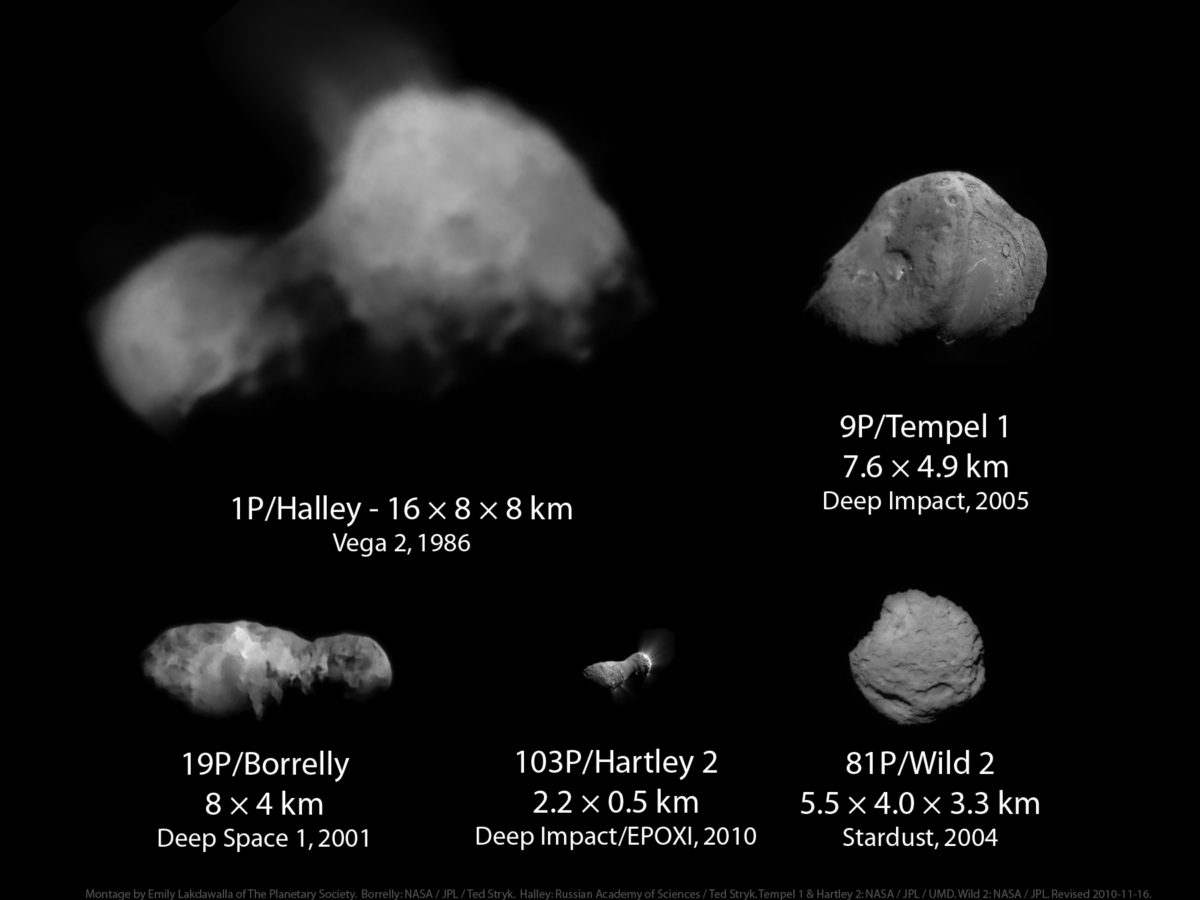Emily Lakdawalla • Nov 05, 2010
Hartley 2 compared to other comets, and in motion 3D
I had to catch up with tasks left undone at home today and didn't have time to write up my notes from the Hartley 2 press briefing, for which I apologize. I'll leave you for the weekend with three cool Hartley 2 pictures.
First, I've composed a montage of all five comets whose nuclei have been imaged directly by spacecraft, to scale with each other, sized for inclusion in your favorite digital presentation software. Hartley 2 is the smallest comet ever visited by a spacecraft!

I get a lot of requests for reuse of these kinds of images. People may absolutely use these in their presentations. I'd love to get an email if you're planning on using it! Please keep the credit line intact -- each image is from a different mission, who should get credit for the data, and Ted Stryk put in a lot of work processing those Halley and Borrelly images. Please contact me first before using it in a publication.
Here's another size comparison, just for fun: Hartley 2 and the International Space Station (upper left corner). Hartley 2 is very small as space objects go, and the Space Station is enormous as human-built spacecraft go; it's pretty remarkable that one can see both things at the same scale within a Web browser! (However, I wouldn't recommend that the Station actually approach a comet this closely -- I don't think it's shielded properly for that environment!)

Finally, get out your 3D glasses. This cool animation is the result of a group effort among the space enthusiasts at unmannedspaceflight.com, which is now part of the Planetary Society! There's no new Hartley 2 data in here; it was just made, by Daniel Macháček and Luca Cassioli, by morphing among the five images that were released yesterday and then using sequential images from the morph animation to make the anaglyphs.

Not ten minutes after I posted the above and went to pick up my kids, the Deep Impact team posted a video of the flyby, which contains more images from closest approach than have been released before. I'm posting it late Friday evening so don't have time to take it apart myself; but I'm sure some of you readers will have fun deconstructing it and finding higher-resolution shots of the comet! Here it is on Youtube, but if you follow this link you'll get to a version in Quicktime format.
Deep Impact's flyby of Hartley 2 Video: NASA / JPL-Caltech / UMD
Have a great weekend!
Support our core enterprises
Your support powers our mission to explore worlds, find life, and defend Earth. You make all the difference when you make a gift. Give today!
Donate

 Explore Worlds
Explore Worlds Find Life
Find Life Defend Earth
Defend Earth

